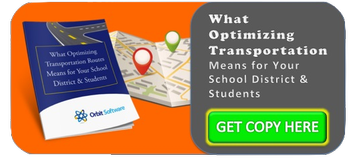GPS Vehicle Tracking - An Introduction
published on August 01, 2014 by Sonia Mastros
GPS vehicle tracking is a very well-established technology at this point, in use by fleet![]() systems and individual drivers all over the world. It's safe, reliable, and even as you read this, there are likely thousands of people using GPS to get where they need to go.
systems and individual drivers all over the world. It's safe, reliable, and even as you read this, there are likely thousands of people using GPS to get where they need to go.
However, we still occasionally get questions about how it works, so we wanted to quickly explain the system for anyone who's ever wondered how the Global Positioning System functions.
GPS Vehicle Tracking In A Nutshell
The Global Positioning System relies on two basic elements: A small radio-receiver in your vehicle, and a network of satellites above our heads. Those satellites – more than thirty at present – are constantly broadcasting down two pieces of information:
-
The time the signal was sent, and
-
The exact position in orbit of the satellite.
These are received by the GPS unit in the vehicle, and they come in from multiple satellites at once. When your GPS is first looking for satellites, it needs to find at least four. Once it does, an on-board computer can take those signals and triangulate its exact position below them.
This is then compared against a high resolution map, and it displays a graphic of your location. If you're moving, it can continually track and update your position at a rate of about 2-3 frames per second. This ultimately gives you a highly precise estimate of both your location and speed.
More advanced GPS units may also include compasses, gyroscopes, or 3G/4F/WiFi antennas to gather additional data as well.
GPS And Student Privacy
GPS systems occasionally come under fire by privacy advocates within school districts, but they really shouldn't. Global positioning only tracks the location of a vehicle. It does NOT record pictures, video, or audio within the bus itself. GPS isn't a security system.
It is possible to integrate an RFID system with onboard GPS, with students "scanning" their ID badge whenever they get on or off the bus. This, too, protects students' privacy. The RFID badges contain no information besides a code number, which matches up to entries in the school database back home.
The badges themselves have no other identifying information, and they cannot track students anywhere else.
GPS Vehicle Tracking In Fleet Management
GPS systems have additional uses when deployed for a fleet of cars or buses, because that positional data can be tracked and archived in databases. Modern systems can even use the Internet to broadcast a bus's location and speed data directly to the transportation office.
As such, GPS brings extremely accurate oversight to transportation systems. Fleet coordinators get a moment-by-moment map of their fleet's locations, no matter how far away, and they also get a proverbial truckload of data on each vehicle's performance.
Occasionally there may be short breaks in transmission, such as going through tunnels, but beyond that the data is uninterrupted whenever the bus is in open air. Because the data is (nearly) complete, statistics such as braking distances and fuel efficiency can be quickly derived, allowing for highly precise vehicle maintenance and optimization.
GPS Is Everywhere
It's easy to see why GPS has become a core element in fleet systems around the world. It simplifies day-to-day navigation, while adding the precision of computer data processing to fleet management.






